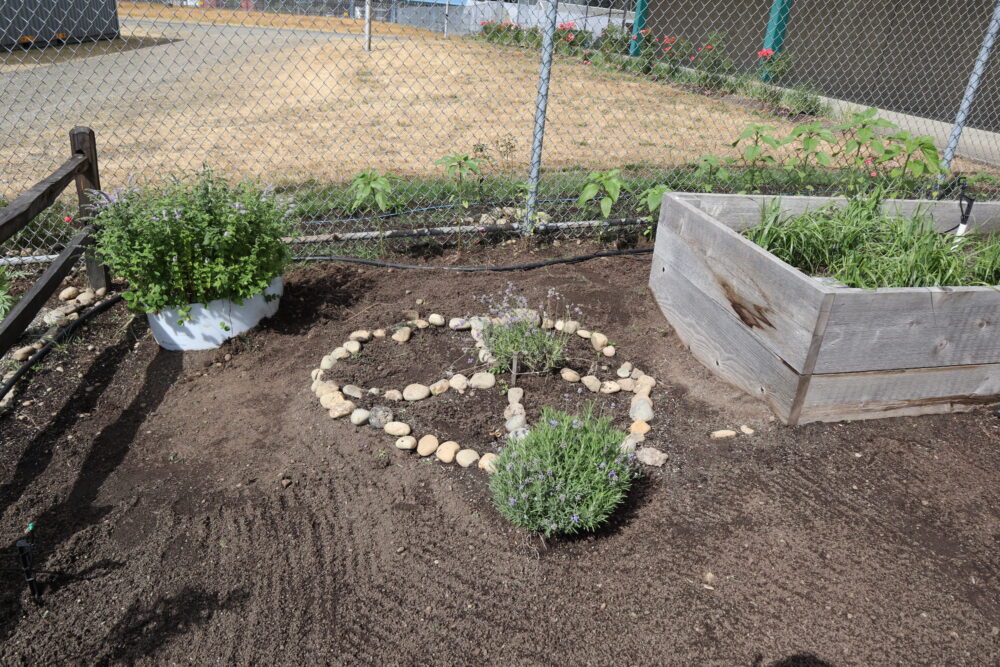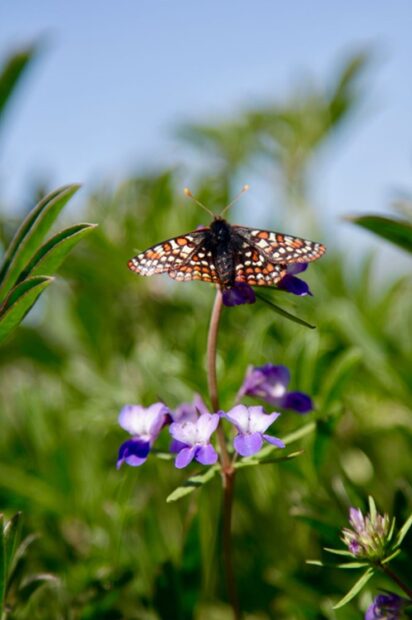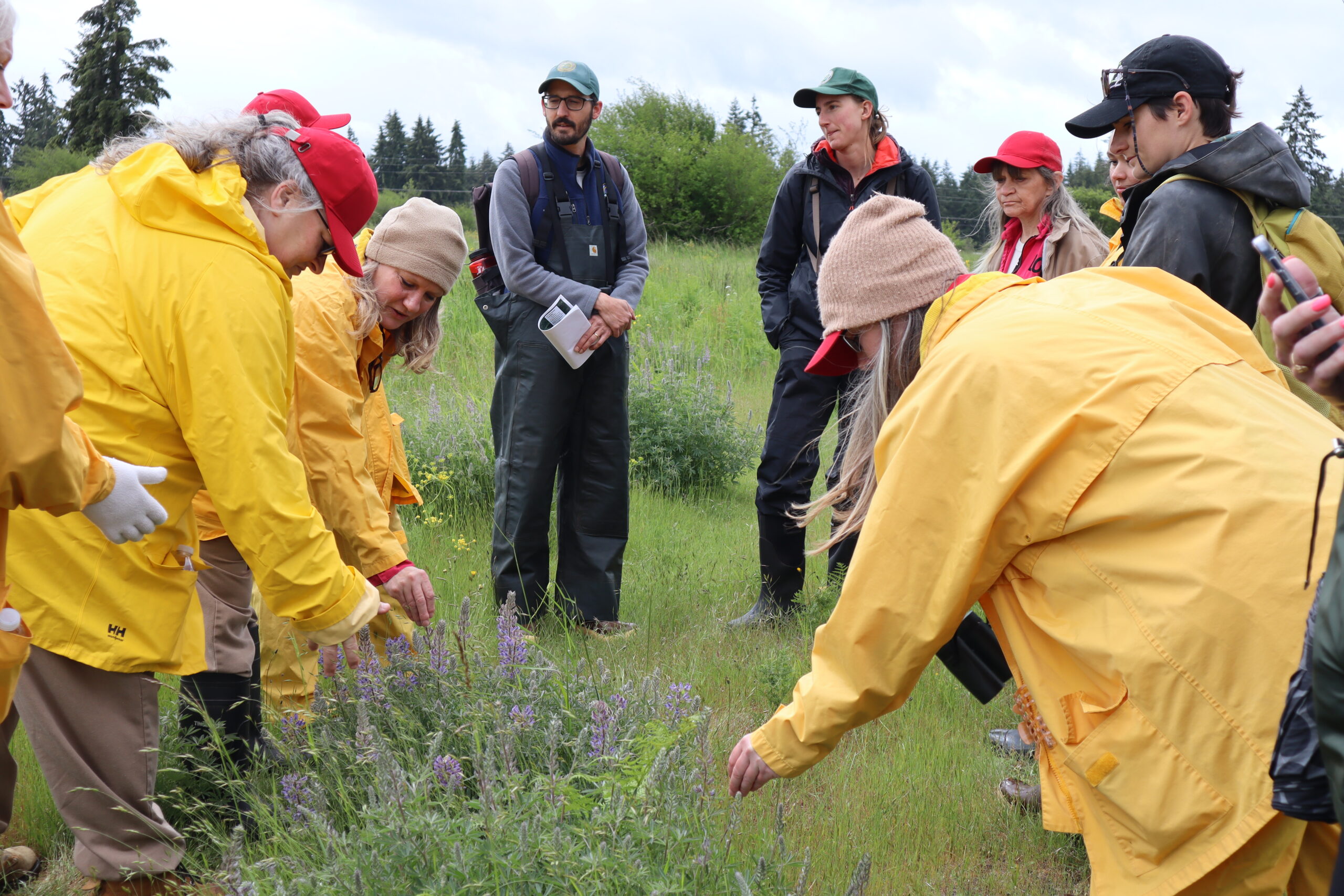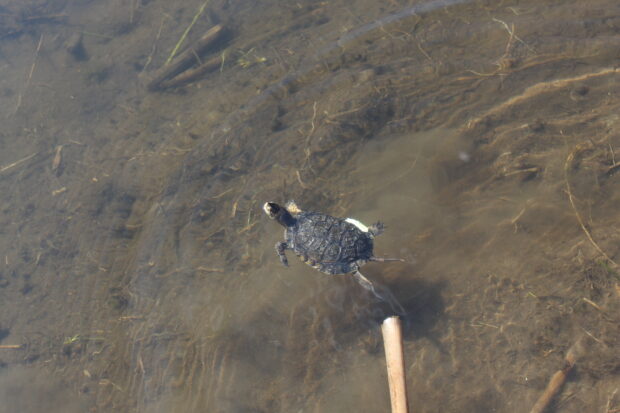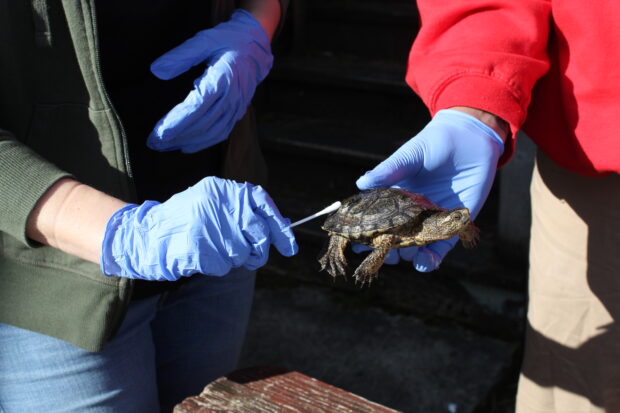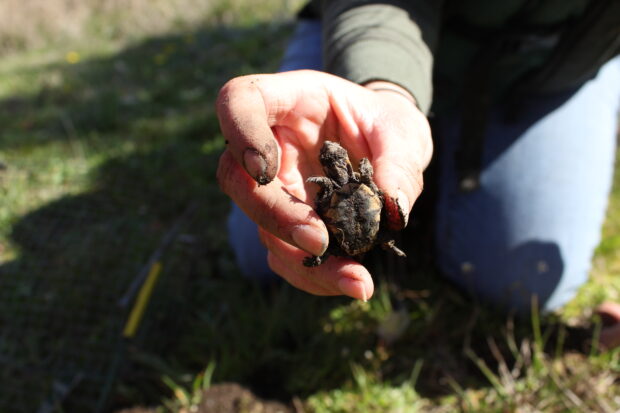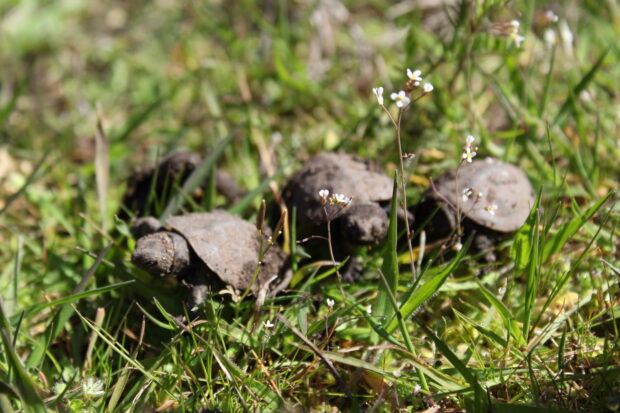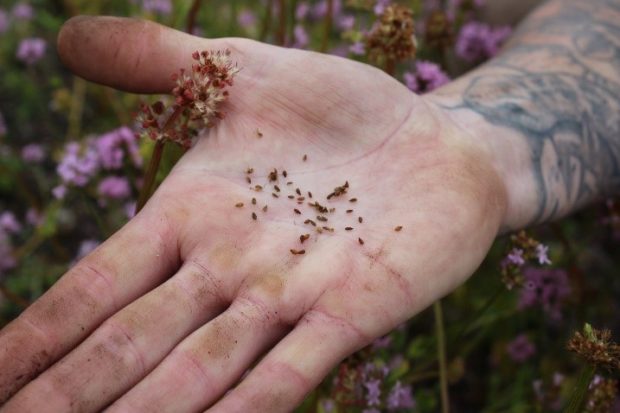A dedicated community of people is what powers the Sustainability in Prisons Project. We sat down with Sal Hernandez, one of our coordinators, to learn a little more about his background and role at SPP.
Can you give us a little bit about your background and what brought you to SPP?
I like working with plants and have been doing it for about a decade—mainly either identification, rehabilitation, or disease control. I managed and maintained a temperate woodland garden for a while. Recently I was an irrigation specialist, leading irrigation at an indoor nursery.
I also believe in second chances. I was on a razor edge for a long time, and I could have ended up in a facility myself if I wasn’t on my game 24/7 as a child. One reason I’m here is because people were nice to me, and I want to be that for someone.
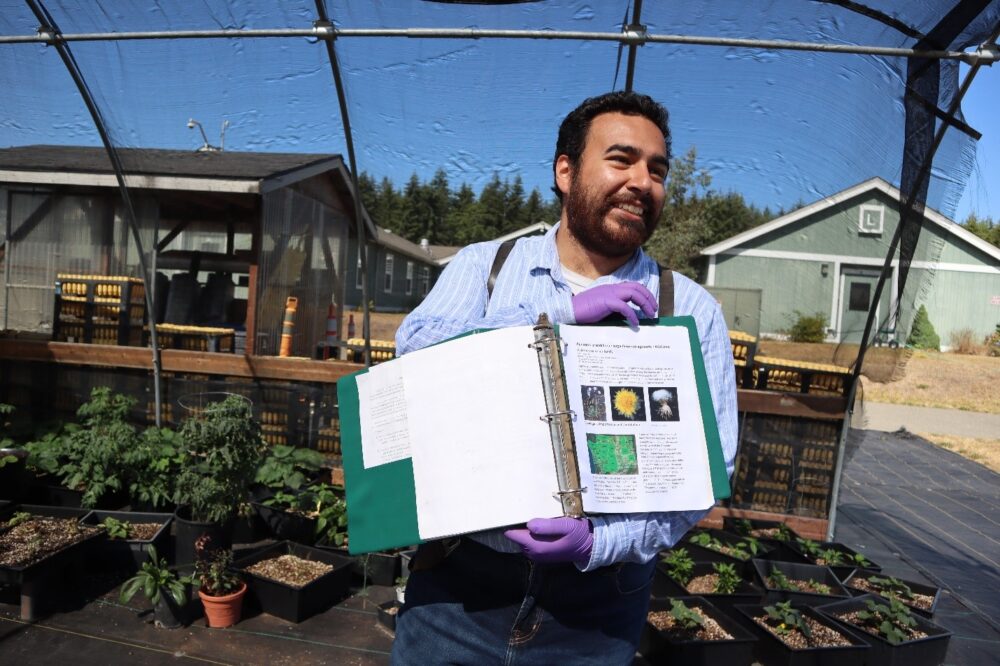
Above: Sal Hernandez, Conservation Nursery Program Coordinator, teaching at WCCW. Below: Sal Hernandez with Michelle Nichols going over sowing logs. Photos by Emily Passarelli.
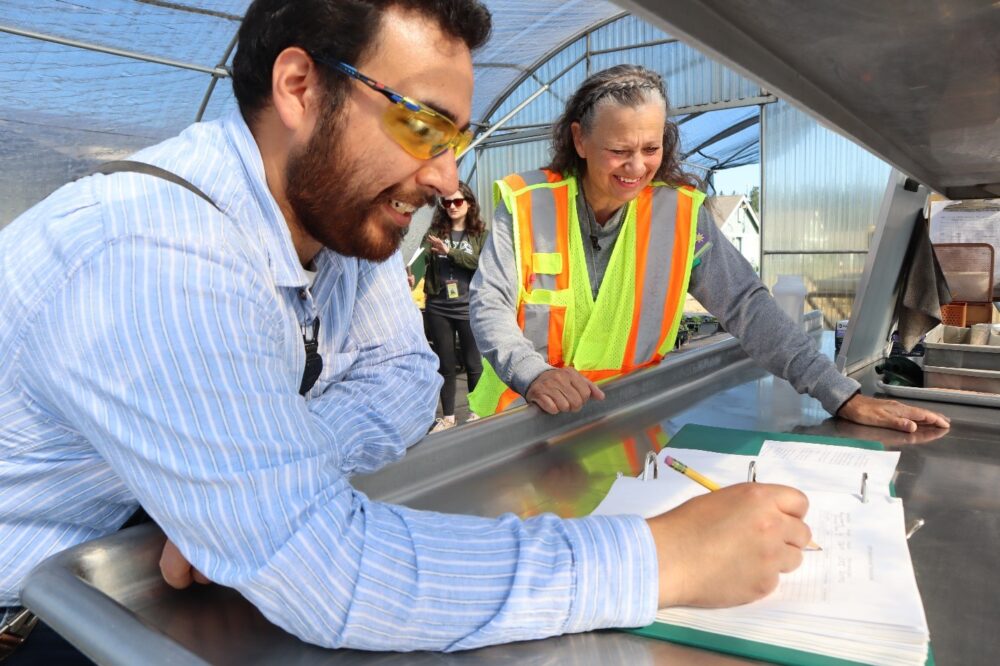
What do you do at SPP?
I teach students at Washington Corrections Center for Women (WCCW) how to grow plants for prairie restoration and conservation around Washington. I teach how to maintain plants and look for disease, different germination practices, burning practices, and geology. I teach about the climate of Washington prairies and what a native prairie in Washington looks like, as well as how to preserve them.
Why type of plants do you work with at the WCCW conservation nursery?
We work with a variety of prairie plants. Several species of Lomatium and Quercus garryana (Garry oak) are two that we work with. Garry oaks are a longer-term plant that we’ll have for a couple of years. Those oaks pass hands because they will stay in the nursery for a long time, and many of the technicians will move on from the job or be released. So that care passes from team member to team member. We also grow strawberries, the native Fragaria virginiana, and Castilleja hispida (harsh Indian paintbrush). We grow those for the [Taylor’s checkerspot] butterflies. The paintbrush is also grown for seed collection since there are low numbers of that plant in the wild. We grow a variety of other stuff too—whatever we need that year.
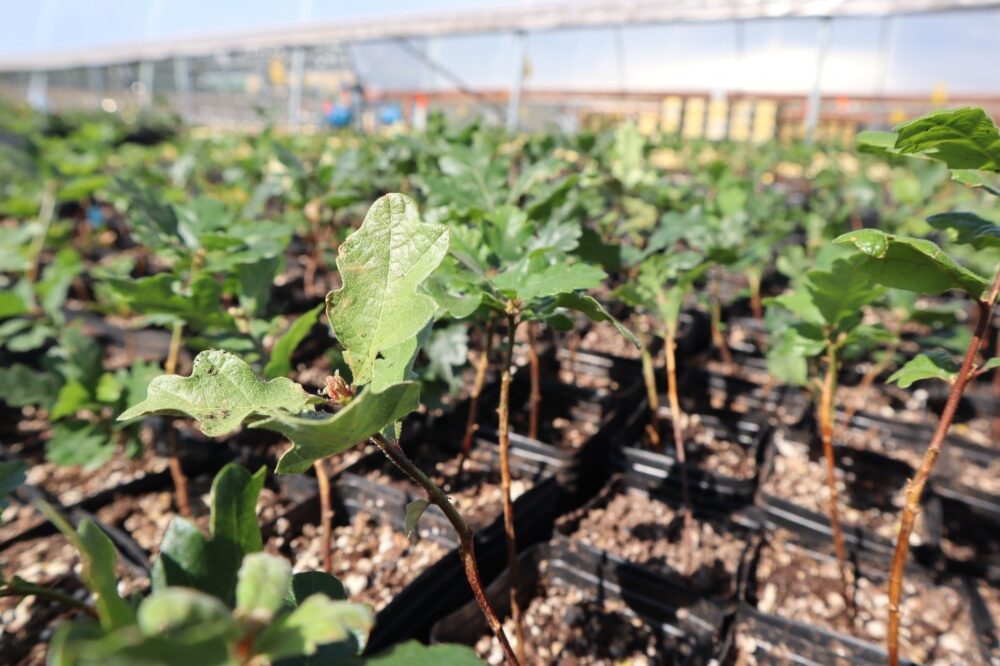


Above: Garry Oaks (Quercus garryana) grown at the WCCW Conservation Nursery. Photo by SPP Staff. Bottom left: Harsh Indian paintbrush (Castilleja hispida). Photo by Rod Gilbert. Bottom right: Technicians plant seeds at the nursery. Photo by Emily Passarelli.
What has been the biggest reward of working at WCCW?
The biggest reward is seeing the technicians really latch on and get a lot from the program. They are always wanting to know more and learning and progressing. Seeing them grow as people as well as students is rewarding.
Students bring new ideas, or they try something new that works—they’re like “maybe this will make it easier.” Or they’re reading through books and they’re asking me questions like “How does this work?” and “What if we did that?”
They are also curious about what they could pursue in the field post release and ask me questions about that process. I’m a big proponent of work, I guess, and I like people learning stuff that they can apply immediately. Getting hands in the dirt is very important to me, and I want to teach them skills that they can use afterwards. They’re very appreciative, and I like to see that they’re already planning beyond incarceration. And just from the few students released, their excitement to be out in the field growing stuff, touching dirt, that’s what is most rewarding.

Above: Janee Medlock shows off two Garry Oaks (Quercus garryana). Below: Sal Hernandez working in the WCCW nursery. Photos by Emily Passarelli.
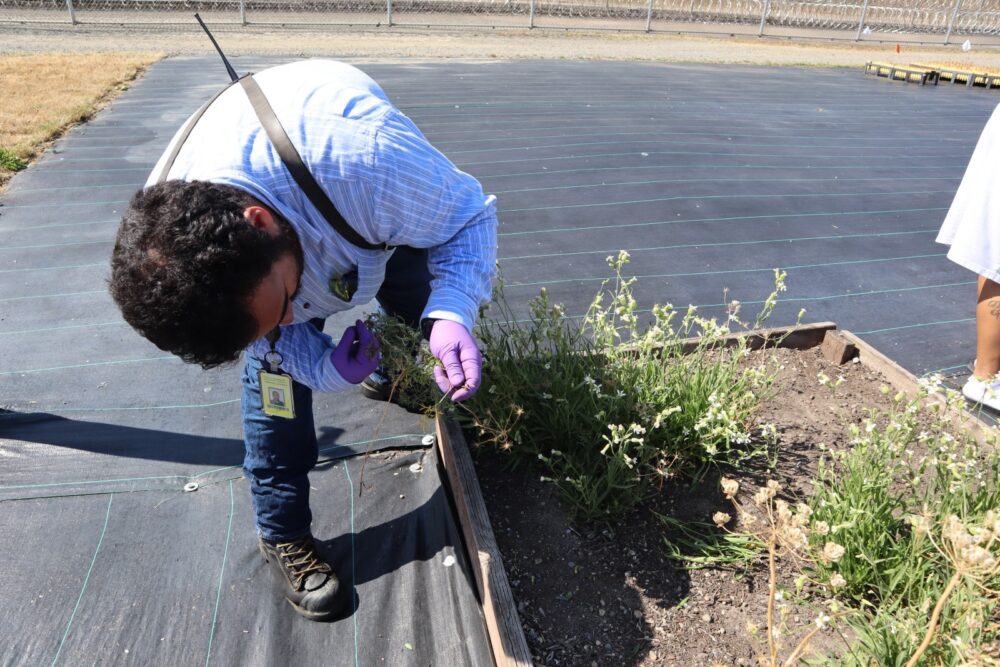
What do you think is coolest northwest native plant adaptation?
Oh definitely Castilleja hispida (harsh Indian paintbrush). It’s a hemiparasitic plant. It can grow on its own during the first few months of life, but it has to eat something so we intentionally plant sacrificial plants next to it that it will eventually kill. Typically, the sacrificial plant is yarrow because it’s a hardy plant. I just think it’s funny that we have to plant other plants so they can eat them. Initially the paintbrush is a smaller plant, but once it connects to the roots of the yarrow it starts blooming thicker, and it grows greener and healthier.
What do you do for fun outside of school and work?
My main thing that I do is historical fencing. I get in full outfit. I fence with a local group that is part of a worldwide organization, and the local group has been great. It’s definitely a found family sort of vibe—a lot of us are really close and we hang out every Wednesday night. We go to tournaments all over the West Coast. During the adventure season we go camping, and we hang out by the fire at night and fight throughout the day. There’s a lot of singing and dancing, it’s really fun.





